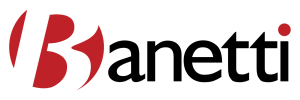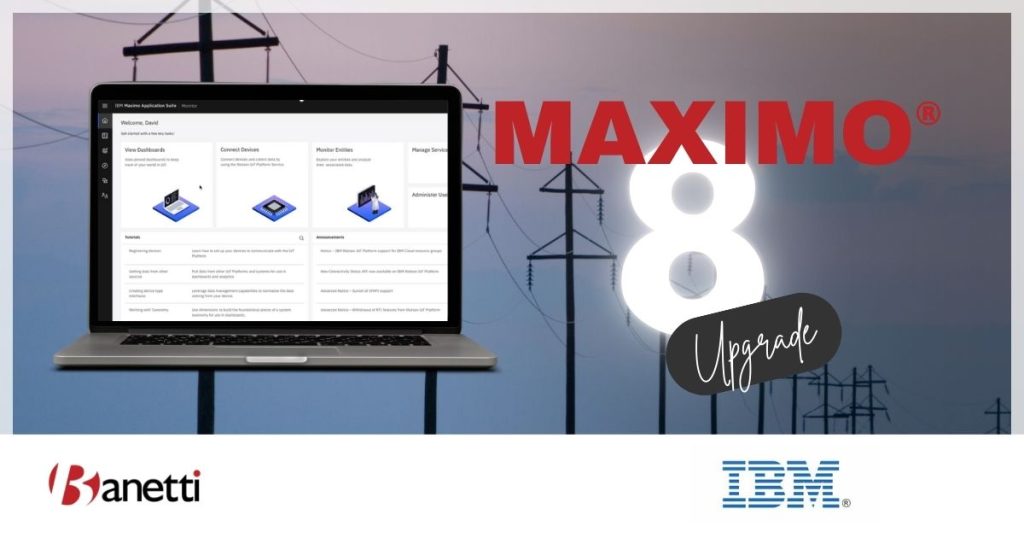5 Min Read
Table of contents

Maximo, IBM’s enterprise asset management solution, has been a cornerstone for organizations seeking to optimize their operations and streamline predictive maintenance processes. This powerful software suite helps organizations across various industries manage their assets, work orders, and inventory more efficiently, ultimately reducing downtime and costs while improving overall productivity.
As technology evolves and business needs become more complex, IBM continues to refine and enhance Maximo to meet these changing demands. The latest iteration, Maximo 8, promises a range of new features and improvements designed to take asset management to the next level.
In this article, we’ll explore the key enhancements offered by Maximo 8 and help you determine whether upgrading is the right move for your organization.
What's New in Maximo 8?

Maximo 8, now known as Maximo Manage within the IBM Maximo® Application Suite, brings a host of new features and improvements to IBM’s enterprise asset management solution. This upgrade represents a significant evolution in the software’s capabilities, focusing on enhanced integration, improved user management, and expanded functionality across various aspects of asset management.
The most notable change is the integration of previously separate add-ons into the base entitlement. This means that users now have access to calibration, linear asset management, and scheduling features without requiring additional licenses or installations. This consolidation streamlines the software package and potentially reduces costs for businesses that previously needed these separate modules.
Another major addition to the new Maximo application suite is the introduction of Maximo Mobile, a next-generation mobile application platform. This new feature allows users to access Maximo Manage functionality securely on mobile devices, supporting both online and offline work management and inspections. This enhancement significantly improves field operations and on-site asset management capabilities.
Key Features of Maximo 8 Upgrade
- Integrated Add-ons: Calibration, linear asset management, and scheduling functionalities are now included in the base entitlement.
- Maximo Mobile: A new mobile application platform for secure access to Maximo Manage features on mobile devices, supporting offline work.
- Centralized User Management: User administration is now handled through the Maximo Application Suite, with improved security group synchronization and license type updates.
- Enhanced Logging: Server logs are now written to standard output, facilitating easier viewing and processing.
- Improved Integration Capabilities: REST API replaces RMI for custom extensions and external applications. New features for Kafka queue management have been added.
- Electronic Signature Enhancements: Improved validation for electronic signature keys, aligning with product password rules.
- SOAP Support: Both SOAP 1.1 and 1.2 are now supported in the same web server instance for WebSphere Application Server Liberty environments.
- New Scripting Points: Added capability to define roles and automate communications to associated users.
- Sequences for SQL Server: Introduction of database objects that automatically generate unique key values or caches of multiple values, potentially improving system performance.
- API Key Authentication: New support for API keys in REST API and integration features, including legacy APIs.
Maximo 7.6 Vs MAS 8 - What's the Difference?

The following comparison highlights the significant changes in the licensing model, technology infrastructure, and overall flexibility that come with the upgrade to Maximo Application Suite 8.
Aspect | Maximo 7.6 | Maximo Application Suite (MAS) 8 |
User Engagement | Each user has a specific license type (Authorized, Limited, Express, Self-Service) | Uses AppPoints system with a shared pool of points |
Licensing Model | Individual licenses for users and add-ons | Flexible point-based system with different user levels (Self-Service, Limited, Base, Premium) |
Add-ons | Separate licenses are required for each add-on | All add-ons included in the suite, access based on AppPoints |
Technology Stack | Windows server using WebSphere platform | Runs on the Red Hat OpenShift container platform and uses Cloud Pak for Data (CP4D) |
Deployment Options | Primarily on-premises | Supports multi-cloud rollouts (private, AWS, Azure, IBM) and SaaS options |
License Management | Requires validation or purchase for each staff movement and role change | More flexible, allows temporary point assignment without additional purchases |
Scalability | Limited by individual licenses | More scalable with the shared pool of AppPoints |
IT Architecture | Traditional server setup | Container-based, cloud-native architecture |
Cost Structure | Based on individual user and add-on licenses | Based on the total number of AppPoints in the pool |
Mobility | Separate add-on (Anywhere) for disconnected mobility | Includes Maximo Mobile as part of the Suite |
Why Should Your Organization Upgrade IBM Maximo® Asset Management?

- Performance Improvements: The latest version of Maximo offers enhanced system performance, reducing response times and improving overall efficiency. This translates to faster data processing, quicker report generation, and a more responsive user interface, ultimately boosting productivity across your organization.
- Advanced Security Features: Maximo 8 introduces improved security measures, including enhanced API key authentication and better electronic signature validation. These advancements help protect your valuable asset data from unauthorized access and cyber threats, ensuring compliance with increasingly stringent data protection regulations.
- Compliance With Industry Standards: Upgrading to the latest version ensures your organization stays compliant with evolving industry standards and regulations. Maximo 8 incorporates the latest best practices in asset management, helping you meet or exceed regulatory requirements and industry benchmarks.
- Lower Total Cost of Ownership: The new AppPoints licensing model in Maximo 8 offers greater flexibility and potential cost savings. By consolidating previously separate add-ons into the base entitlement, organizations can reduce licensing complexity and potentially lower their overall software costs.
- Improved Reporting and Analytics: Maximo 8 provides enhanced reporting capabilities and integration with advanced analytics tools. This allows for deeper insights into asset performance, maintenance trends, and operational efficiency, enabling data-driven decision-making across your organization.
- Seamless Integration: With Other Enterprise Systems The latest version offers improved integration capabilities, including better support for REST APIs and enhanced Kafka features. This facilitates easier connections with other enterprise systems, promoting dataflow and consistency across your IT ecosystem.
- Scalability for Future Needs Maximo 8’s cloud-native architecture on Red Hat OpenShift provides greater scalability and flexibility. This allows your business to easily adapt to changing business needs, accommodate growth, and take advantage of future technological advancements without major overhauls.
How to Upgrade to Maximo Application Suite 8?

There are two primary methods for upgrading the Maximo Application Suite and its applications:
Manual Upgrade Method
This is typically used by organizations that originally installed Maximo Application Suite by downloading the software from IBM Passport Advantage and running the installer script. With this method, you are responsible for keeping the suite up-to-date with the latest version.
You’ll receive notifications when new versions become available, but it’s up to you to initiate the upgrade process. The manual method gives you full control over when and how upgrades are performed, but it also requires you to ensure compatibility between versions.
Channel Subscription Method
The second method is the channel subscription approach. This is used if you installed Maximo Application Suite from the IBM Operator Catalog in your OpenShift cluster. With this method, your Maximo Application Suite instance is automatically kept up-to-date with the latest version available in the Suite operator’s subscription channel.
This approach offers a more hands-off experience, with updates being applied automatically. However, you do have the option to reconfigure the subscription, which requires manual approval before upgrades begin, giving you some control over the process.
It’s important to note that once you’ve installed the Suite or deployed an application, you cannot change the upgrade process. To switch methods, you would need to reinstall the Suite or delete and redeploy the application.
What is The Cost Implication of Moving to Maximo 8 Enterprise Asset Management?
The transition to Maximo Application Suite 8 introduces a significant shift in the cost structure for organizations considering an upgrade. The new pricing model, centered around the concept of AppPoints, offers a more flexible and potentially cost-effective approach to licensing.
Under this new system, organizations purchase a pool of AppPoints rather than individual user licenses. These AppPoints can be utilized across any MAS-8 application, allowing for greater versatility in how the software is accessed and used within the organization. This flexibility is particularly beneficial for companies and industries with varying user needs or those operating multiple shifts.
One of the key advantages of the AppPoints system is its “pay for what you use” approach. This means that organizations are not locked into a fixed number of licenses that may go unused. Instead, AppPoints can be dynamically allocated among users as needed. For instance, occasional users who might have required a full license in previous versions can now consume points only when they access the system, potentially leading to significant cost savings.
Conclusion
As Maximo users consider the transition to Maximo Application Suite 8, they stand at the threshold of a significant evolution in enterprise asset management. This upgrade not only introduces a more flexible licensing model but also enhances data-sharing capabilities across the organization. While the process may involve careful planning and data migration, the benefits in terms of improved asset lifecycle management and access to advanced industry solutions make it a compelling proposition for many businesses.
Enterprise Asset Management consulting companies like Banetti help businesses navigate this transition. With their deep expertise in IBM Maximo® and understanding of diverse industry needs, Banetti can assist enterprises in planning and executing a smooth migration to MAS-8. Their consultants can help organizations assess their current setup, design an optimal AppPoints strategy, and ensure that the new system is configured to maximize the benefits for their specific asset management needs.


